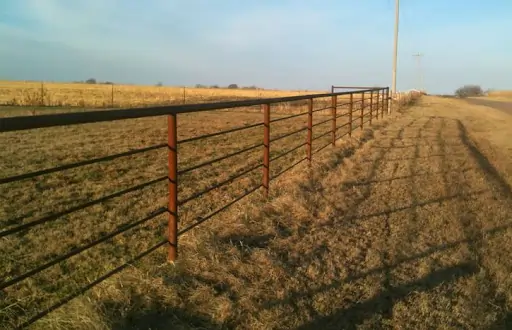When it comes to protecting our homes, gardens, and livestock from the wide array of wildlife that wander into our spaces, fence spacing for wildlife control is one of the most critical aspects we must consider. We often hear stories about homeowners who have found themselves in dire situations due to inadequate fencing. Whether it’s deer munching away at our carefully tended gardens or raccoons rummaging through our trash, the wrong fence spacing can lead to frustrating encounters with wildlife. In this article, we’ll explore the importance of proper fence spacing and how it can make a significant difference in safeguarding our property.
Understanding Wildlife Behaviour
To effectively implement fence spacing for wildlife control, we need to understand the behaviour and characteristics of various animals. Each species has unique traits that influence how it interacts with fences. For example, deer are natural jumpers. They can easily leap over low fences, especially if they are motivated by food. A standard fence height for keeping deer out should ideally be between 7.5 to 8 feet tall. However, even with the right height, if the openings in the fence are too large, these clever creatures may find a way through.
On the other hand, smaller animals like rabbits and chipmunks can slip through surprisingly tiny openings. For rabbits, a fence with openings larger than 1 inch will likely be ineffective. Chipmunks, being even smaller, require a fence that has openings of ½ inch or smaller. This understanding is pivotal; we need to customise our fencing strategy according to the species we are dealing with.
Choosing the Right Fence Material
Once we grasp the behaviour of the wildlife we’re trying to deter, the next step involves selecting the appropriate fencing material. Different materials offer varying levels of effectiveness based on their structure and durability. For instance, a woven wire fence is often recommended for larger animals like horses and cows. This type of fence features openings that can be adjusted according to the specific needs of the animals we want to keep in or out.
For smaller animals, such as snakes, a very fine mesh (¼ inch) is essential. This protects our gardens from unwanted visitors while ensuring that we do not harm the local wildlife. When choosing materials, we should also consider their longevity and resistance to wear and tear. A sturdy fence not only provides better protection but also saves us time and money in the long run.
Installation Techniques That Matter
Proper installation techniques play a vital role in ensuring that our fencing truly protects against wildlife intrusion. It’s not just about the height and width of the openings; how we install the fence is equally important. For instance, when dealing with groundhogs or feral pigs, we recommend burying the bottom of the fence at least 6 to 12 inches underground. This prevents these diggers from burrowing underneath and gaining access to our gardens or livestock.
Furthermore, for animals like raccoons, who are adept climbers, incorporating a no-climb extension can enhance the effectiveness of our fencing system. These extensions create a barrier that makes it difficult for raccoons and similar animals to scale the fence. Ultimately, the installation process should consider all potential entry points and wildlifbehavioursrs to create a comprehensive barrier.
Regular Maintenance Is Key
After investing time and resources into setting up our fence, we must not forget the importance of regular maintenance. Fences can deteriorate over time due to environmental factors, wear and tear, and even wildlife interactions. A once-effective fence can become a weak link if not properly maintained. We should routinely inspect our fences for any loose wires or damaged sections, especially after severe weather events.
Additionally, we should pay attention to the surrounding environment. Overgrown vegetation can provide cover for animals, making it easier for them to approach our fences undetected. Keeping the area clear of debris and trimming back plants can significantly reduce the risk of wildlife intrusion.
FAQs About Fence Spacing for Wildlife Control
- What is the best fence height for keeping deer out?
Ideally, fences should be between 7.5 to 8 feet tall to effectively deter deer. - How small can openings be for rabbits?
Openings should be 1 inch or smaller to prevent rabbits from squeezing through. - What material is recommended for a snake fence?
A fence with a mesh size of ¼ inch is ideal for keeping snakes out. - How deep should I bury my fence for groundhogs?
It is recommended to bury the fence at least 6 to 12 inches underground to prevent digging. - Do I need a special fence for raccoons?
Yes, incorporating no-climb extensions can help keep raccoons from scaling the fence. - How often should I check my fence for damage?
We recommend inspecting your fence at least twice a year, especially after storms or heavy winds.
By understanding the intricacies of fence spacing for wildlife control, we can take proactive steps to create a secure environment for our homes and gardens. Whether it’s through selecting the right materials, employing effective installation techniques, or maintaining our fences regularly, the effort we put into wildlife control pays off in the long run. No one wants to deal with the aftermath of an animal invasion, and with the right fence strategy, we can avoid such headaches altogether.
Final Thoughts
At Critterfence, we know that every property is unique, and so are the challenges presented by local wildlife. By tailoring our fencing solutions to meet these challenges, we can ensure that our gardens flourish and our pets remain safe. Let’s take the necessary precautions and implement the right fencing strategies today—it’s an investment that will save us from future regrets.
Read more: 5 Consequences of Wrongful Filling of a Proposal Form in Insurance


